 |
|
|
|
|
|
Welcome to the Website for N5814L The Online Refurbishment Record of 1972 Grumman AA-5 Traveler N5914L Serial Number AA5-0014 |
|
|
|
Galleries |
|
Links |
|
|
|
Dissembling and moving 14L to the Grumman Rejuvenation Spa Now we own 14L. Now we have to get it broken down and moved the heck out of Dave's hangar, off this airport, and into my home shop 35 miles away. |
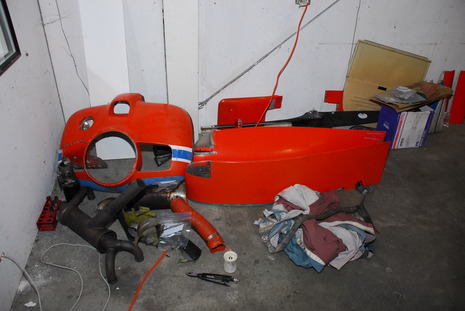 |
|
The vertical tail came off without too much ceremony. Pretty much
every screw in the dorsal was corroded and had to be drilled out; a
recurring theme through out the aircraft. |
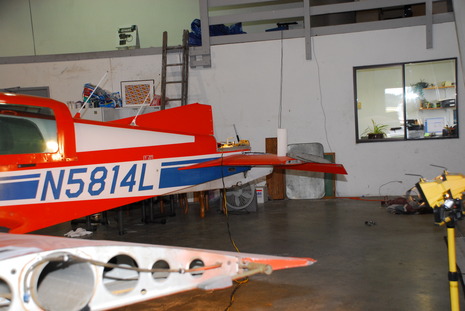 |
|
The vertical tail awaiting its next stop. |
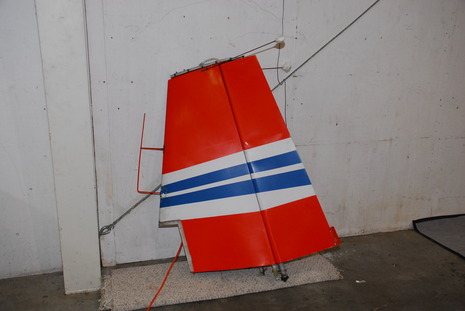 |
|
Getting ready to pull the horizontal. Of course, we got to contend
with the requisite broken and spinning nut plate. |
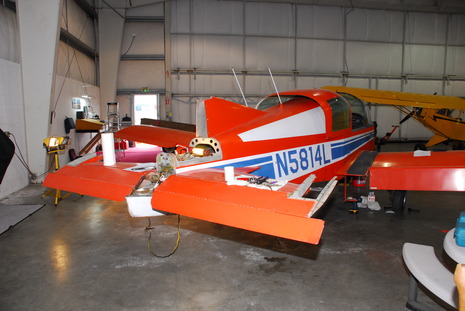 |
|
Finally un-fletched. |
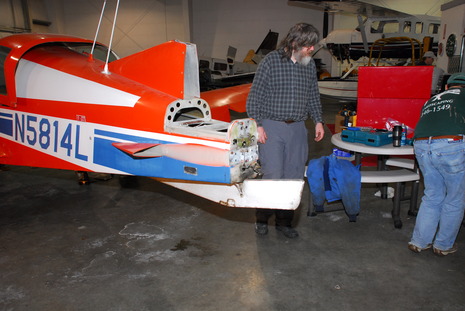 |
|
The shop manual offers a method of removing the horizontal in in
halves. It includes removing the ten rivets that join the center rear
spar halves. No thanks. |
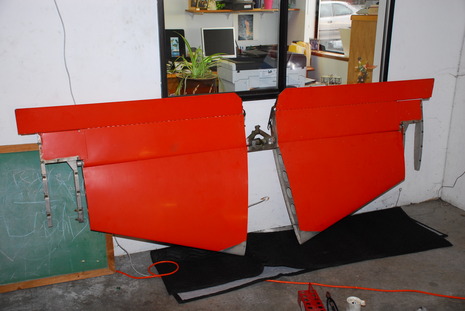 |
|
An insurance snafu prevented us from moving the hauling 14L away on the
first day. We did manage to haul away everything but the fuselage,
wings, and tail surfaces. |
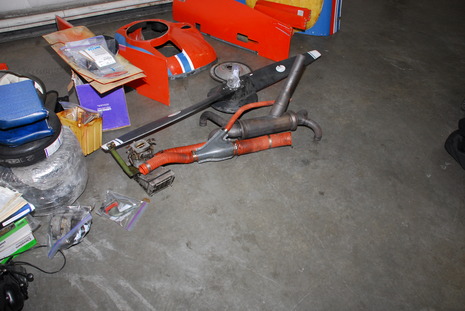 |
|
Darryl did some checking around and determined that wing removal was one of
those projects that's incredibly simple except for those times when it
isn't. It wasn't. No pictures. All 10 hands that were on
site to help out were occupied with wiggling, tugging, and ultimately,
aching. |
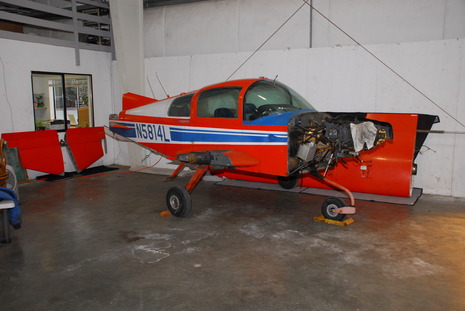 |
|
Day two. We rounded up a trailer from a fellow Coot builder a couple
of towns away. It was nearly ideal for our purpose, if a little
narrow. |
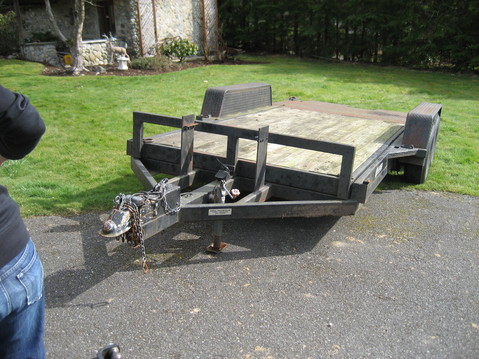 |
|
We laid a, 8 1/2-foot 2 X 10 under the wheels and patched a ramp together
from crating scraps that we found around a nearby dumpster. |
 |
|
A comealongs were routed from either side of the fuselage through tie down
rings to a single control point so that one person could evenly tension both
sides of the plane while the two other folks controlled the nose. |
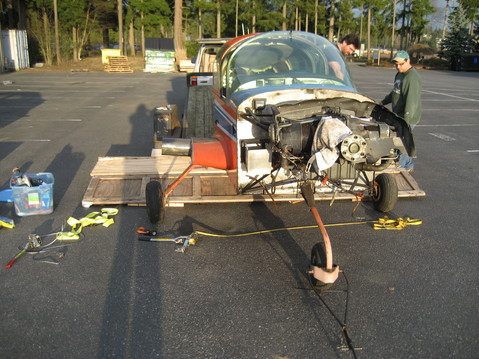 |
|
There's a first time for everything and this was a first for all of use with this particular type of plane and this particular trailer. We took out time with this phase of the loading process. |
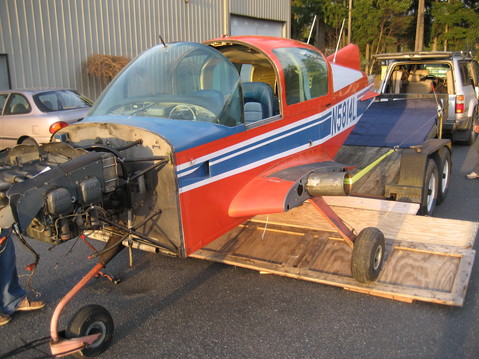 |
|
Centered on the plank with the main wheel tires tight against the trailer
wheel wells. The sketchiest part of the loading operations was over. |
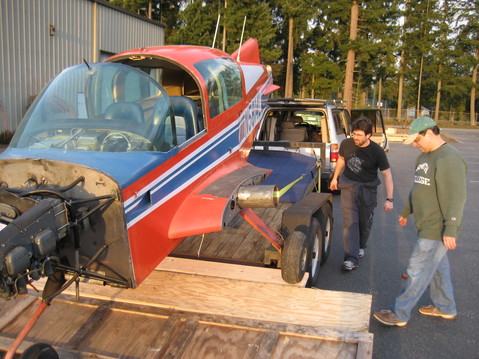 |
| Trailer bed lilted down and locked. Time to lasso the tai. A furniture pad and the 1 1/2 foot long 2 X 10 remnant from the main gear plank was sufficient to distribute the load. |
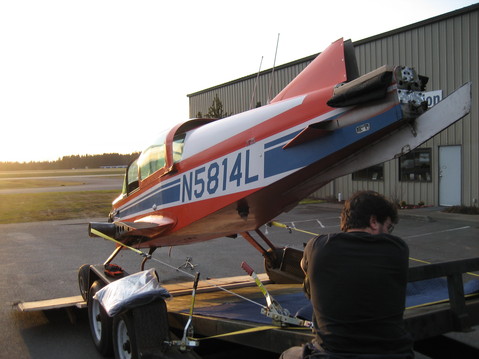 |
| Winching the tail down. Given that every failure scenario we could come up with here would be catastrophic at best, we decided to take a belt and suspenders approach to securing the tail. |
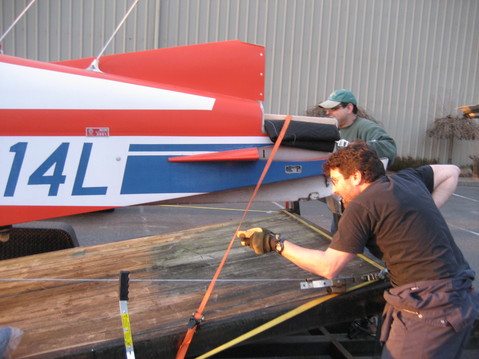 |
| By the time we drove away, we had enough webbing crisscrossing the tail to withstand a 5000 pound load. |
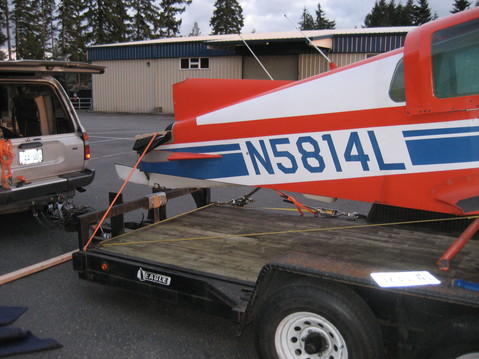 |
|
Nose hoisted aloft, we were ready for final securing. |
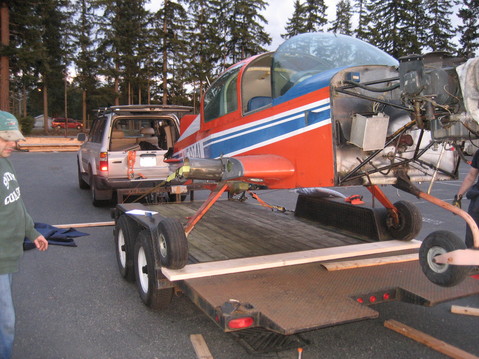 |
|
Somehow the daylight slipped away. Fortunately, the parking lot was
well lighted. Friend Steve fashioned a Visqueen cocoon for the engine and, at the last moment, while we were joking about what sort of drogue chute it would turn into, thought to punch a few "speed holes in the nose. It rode beautifully. |
 |
|
In a state where the unsecured load law has a victim's name attached to it, we were determined not to find ourselves on the news. I have no idea how many tens of thousands of pounds our strapping job would have born, but we were determined to allow no hopping, sliding, or shifting. The only over-secured load is the one that you don't take anywhere. |
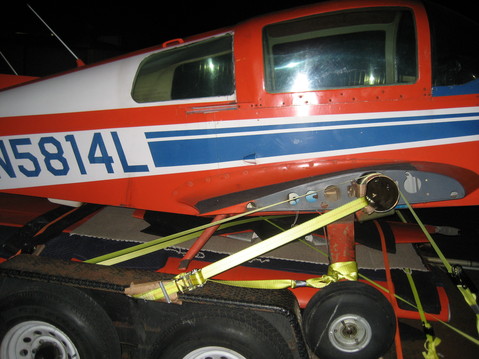 |
| Nine hours into the project and ready to roll. I have long felt that aircraft should only move over the nations roads under cover of darkness. |
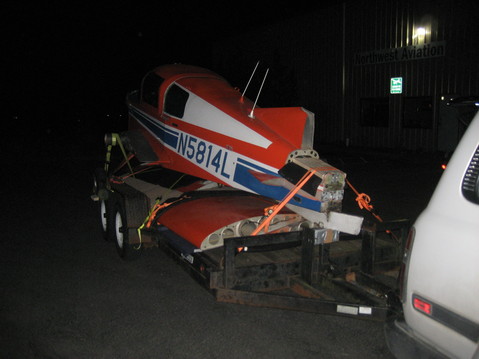 |
| Safely home and winching down the ramp. |
 |
| The rest of the sequence shows us getting 14L bedded down in its new temporary home in my shop. |
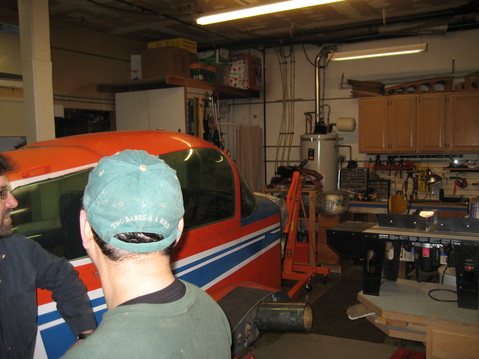 |
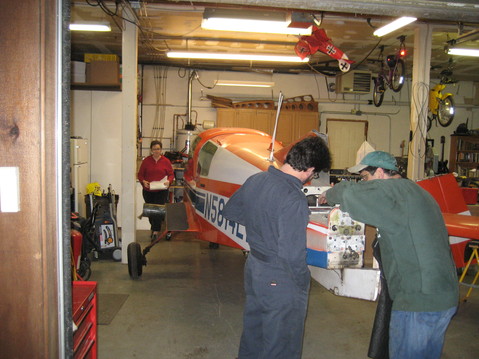 |
|
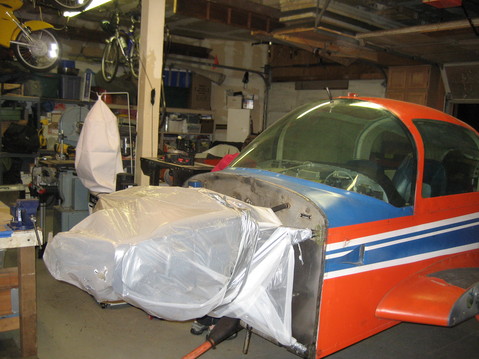 |
|
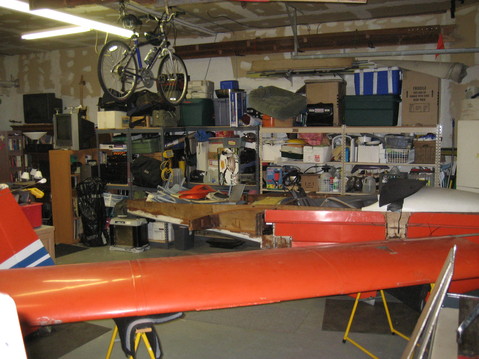 |
|
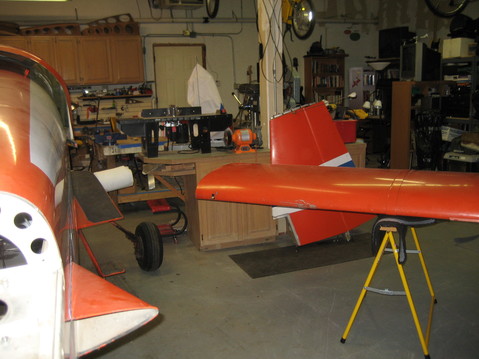 |
|
| The poor Coot hull has also been pressed into service as a storage bin. Merely a temporary arrangement, however. Eventually they'll be airworthy stablemates serving vastly different and complementary missions. |
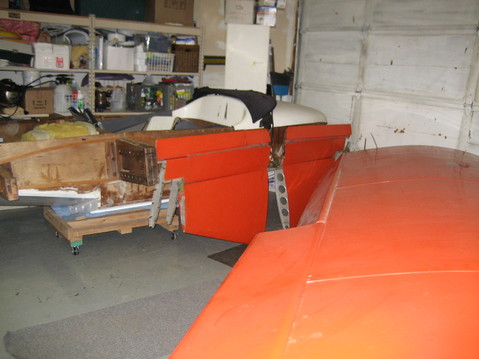 |
This page last updated on 08/06/2018